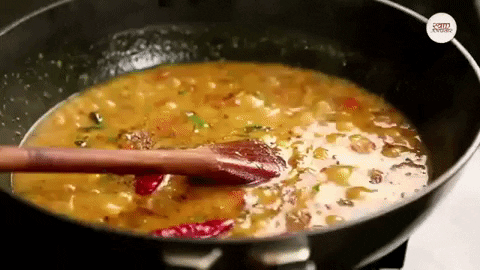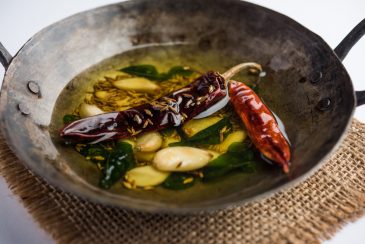
It’s one of those combinations that is so deeply rooted in our Pakistani culture that we do not often think about its significance. But it is during those times that its appearance loses frequency and its availability becomes scarce, that we truly understand the essence of this dish; not the extraordinary flavors, nor the exciting accompaniments but the homeliness and nostalgia that we have roped in with the simple daal chawal.
I remember as a child, I was irritated by the constant presence of daal chawal at the dinner table. Again!? My siblings and I wrote it off as a ‘Sindhi’ thing; turns out, it’s a very common practice across Pakistani households to have this dish appear as a staple. Whatever else there may be, some version of lentils and rice would be present. As we grew older, we understood what makes daal great and all the different types of lentils that could be used. The aroma of the tarka (tempering) was enough to cue the rush to the dinner table. Our demands for biryani lessened, as the search for the perfect sides increased: talay huay aaloo, shami kabab, woh larkana waala achaar, kachumar, and bhari hui mirchain (fried potatoes, kababs, the pickles from Larkana, chopped salad, and stuffed chillies).
Time passed, and our differing geographic locations made sure that we were far away from everything related to home and the next thing you know, is that we’re calling each other asking for daal recipes. That’s a tell-tale sign of being an adult, isn’t it? Putting on some 90s music on YouTube and cooking some old fashioned daal chawal in order to forcefully evoke some nostalgia.
So many types of daal
Just writing this made me think of the different types of daal and how they’re associated with different times/moments in my life- I wondered if it was the same for others; and whether they thought that the type of daal made in their homes was due to their ethnicity or not.
For me, in my purely Sindhi household, daal was prepared in three variations:
- If it is to be had in the morning, we’ll make phikki daal (pheeki/bland), this is made simply with black pepper instead of red chili powder and skips the tarka altogether (side note: this sparked a major debate in my Sindhi family WhatsApp group. Some women said the tarka is of green chilies and some said they skip it).
- For dinner, we use a mixture of moong and masoor, cook it tell very tender and mash it with the back of a wooden spoon. Once it’s pasty, we add water and let it cook to a soupy consistency before tempering it with garlic, cumin seeds and curry leaves.
- Now, lunch would be the only time to mix it up and maybe add channay ki daal to the menu- this is a dry version where the lentils are nicely separate and coated with a spicy masala
Related: Is Daal Chawal Good For You?
After I got married into a family with an Urdu-speaking background, I saw a very different style of daal being made that I was entirely unused to: the moong masoor wasn’t mashed and left in its original form once tender. Different types of lentils would routinely be added to change it up. AND the biggest differences: it wasn’t always had with rice! It was mostly made for lunch and not dinner.
So does ethnicity play a role in the way you make daal?
I took to a popular Facebook platform and asked. These are my findings, in a nutshell:
- There are innumerable ways to cook daal
- There’s a lot more to tarka than meets the eye
- It is, in fact, a staple in most households
- The ethnic backgrounds covered in the post were: Sindhi, Parsi, Urdu Speaking, Pathan, Punjabi, Memon, Saraiki, Lucknavi, Baloch, Bihari, Hyderabadi, Gujrati, Sri Lankan and more
- The Bihari community was unanimous in saying that their signature daal is ‘runny’, ‘soupy’ and known as the famous ‘patli daal’
- Hyderabadi daal, whether khatti or meethi, is always blended and smooth- much like Sindhi daal in general
- Punjabi daal was mostly referred to as ‘dry’ and ‘khili khili’ (separate, unblended lentils) but there were differing opinions
- Memon opinion was different in terms of the consistency, but it was agreed that it is normal to add a vegetable to daal, preferably loki or kadu (variations of pumpkin and squash)
- The Urdu-speaking community was by far the one with the most variations: the responses ranged from pureed to runny and separate to dhaba style
- Sri Lankan lentils are prepared with the addition of Pandan leaves and coconut milk
Find out how you can use lentils as an excellent face mask here
One thing is for certain, there are as many ways to prepare daal as there are households in Pakistan. It is an ingredient that sparks debate, brings people together, reminds us of home and brings us comfort. I originally wanted to end this article with the perfect recipe for daal, but now I understand there isn’t one. It’s a dish that is custom to every home. And it is an ingredient that deserves more exposure than it gets.


